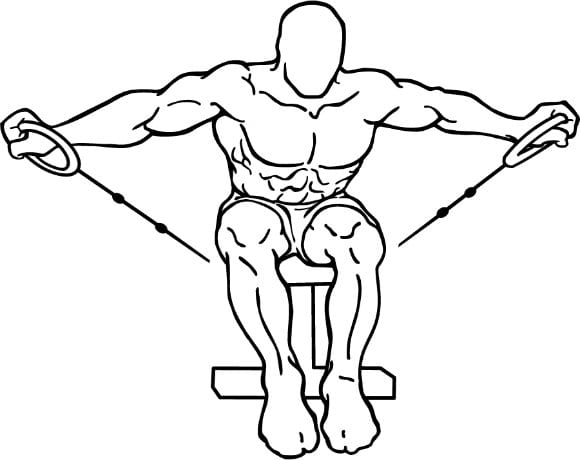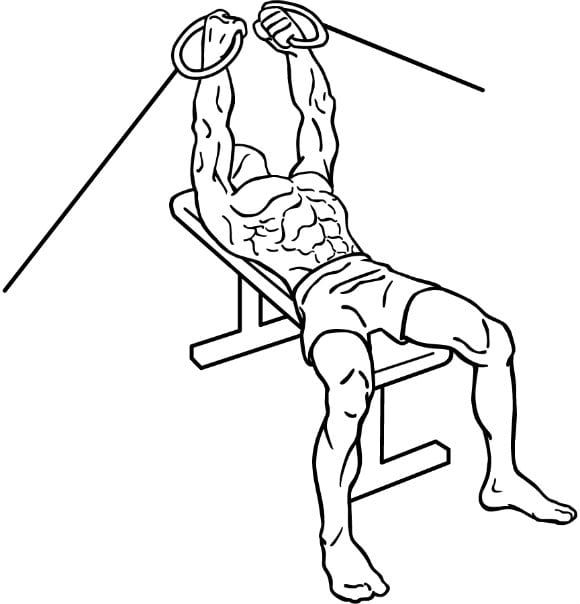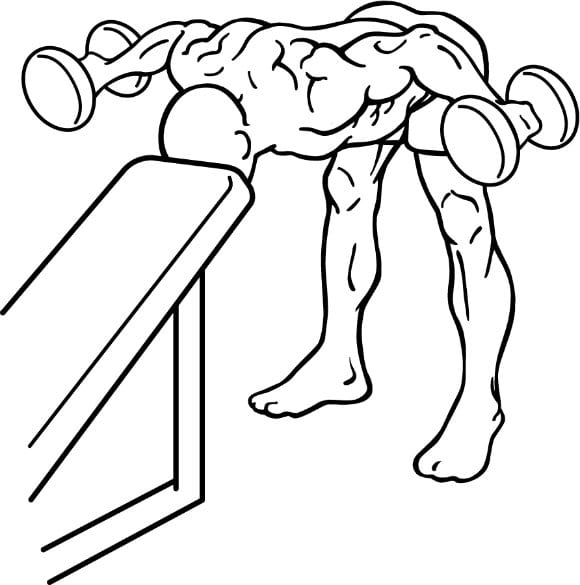By the healthiergang writer , student in Physiotherapy.
Crossed Cables Exercises
By crossed cables we mean the two-column station, consisting of weight attached to cables, present in most gyms.
It is generally used to train the pectorals by performing exercises such as the crossover or its variants.
However, the crossed cables are also suitable for training the back and shoulder muscles. The exercises that can be done are many and can stimulate practically all the muscles of the upper body. However, there are some useful but little known exercises.

1. Pull down
The pull down is a very common exercise but in almost all cases it is performed on the appropriate lat machine. Using the crossover cables for this exercise is an opportunity to concentrate fully on the contraction of the lats and emphasize the function of lateral adduction.
Grabbing first one cable and then the other, get on your knees positioning yourself in the center of the crossed cables moved slightly backwards. From here bring the elbows down and towards the body by contracting the lats.
This exercise is unique because it allows you to perform the vertical traction movement while minimizing arm flexion and thus isolating the back muscles more. In fact, if we observe the movement of the elbows, we see that these describe a sort of curve and not a straight line.
This is because during the movement there is a greater contribution in the lateral adduction movement than in a traditional pull down. This exercise is therefore useful for developing a good mind-muscle connection and as a final exercise in a back workout. Therefore opt for high repetitions, from 12 to 15 for a total of 3 series, adding a pause of one or two seconds seeking the maximum contraction in the lats.
The eccentric phase must be slow and controlled and must not be maximum. This means not losing control of the movement and letting the weight take the arm too far away from the body. If this were done this would put a lot of stress on the joint promoting a dislocation of the humerus at each repetition.
2. Crosses on bench
Place a bench in the center of the cables. Grab one cable first and then the other. Position yourself on the bench and perform the shoulder adduction movement (such as the exercise of the crosses) by contracting the pectorals.
The benefits of this variant are constant tension and less risk to the shoulder joint. An additional benefit is to be able to focus more on the contraction of the pectorals compared to a normal crossover as you are lying on the bench and there is no need for any stabilization.
The movement is pure adduction of the shoulder, as in the “Pec Dek” machine, but in this case the movement is not guided and can be adapted to the person.
By varying the inclination of the bench, the different bundles of the pectoral are affected. A good idea would be to use this exercise as a burn out for a chest workout.

Again opt for high repetitions, between 12 and 15, for a total of 3 series. Finally, you can also add an intensity technique for the last set: bring the set to just before exhaustion.
At this point carry out a repetition bringing the pectoral to maximum contraction, then bringing the hands as close as possible to each other while maintaining a slight flexion in the elbow. Maintain the position for as long as possible.
When the isometric strength also starts to give, so you can no longer keep your hands together, check the negative phase until the muscle is stretched to the maximum but still maintains some of the tension.
At this point the arms should no longer move. Maintain the stretch for 30 to 40 seconds trying to endure the maximum burning. With this series conclude the training session.
3. Reverse crosses
Positioning the cables at the bottom, grasp the left cable with your right hand and the right cable with your left hand. From here bring your arms up and out, creating a sort of "X" with the cables. This movement is useful for training the posterior deltoid, lateral deltoid, trapezius and rotators of the cuff.

The muscles listed are often poorly trained but important if not essential for good posture. Choose light weights and also in this case opt for high repetitions for a total of 3 or 4 series.
Conclusion
As we have seen, crossed cables are an excellent gym tool that allows you to train different muscles of the shoulders and arms. With these exercises you will be able to strengthen your upper body and become stronger.
Our articles should be used for informational and educational purposes only and are not intended to be taken as medical advice. If you are concerned, consult a health professional before taking dietary supplements or making major changes to your diet.


























